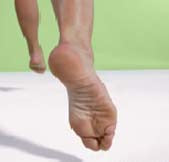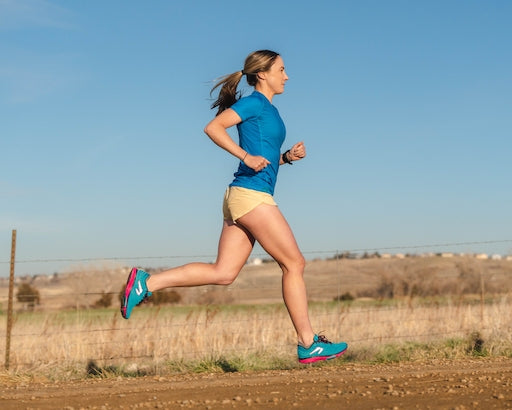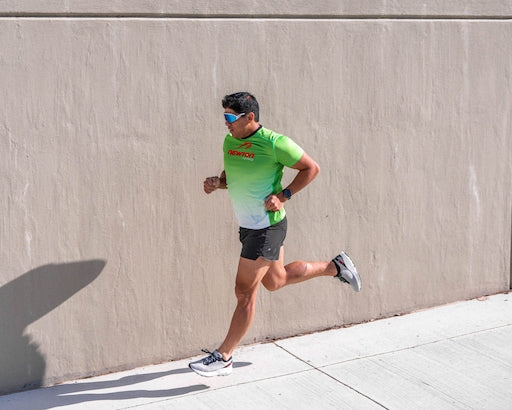
Beware of Barefoot Running Injuries
natural running overcoming injury running form shoe design22 September 2018
By Newton Running
People have been experimenting with barefoot running for a long time, but in recent years the activity has gained mainstream notoriety and science-based credibility.
Most coaches, elite athletes, physiologists and other medical experts agree that running barefoot in very small doses on soft surfaces can help improve your running mechanics and teach your body to land lightly at your midfoot, but they also agree that you should wear some kind of running shoes most of the time.
“Throw your shoes away for good? Sure, if you have perfect mechanics and you’ve been living barefoot all of your life,” says Dr. Mark Cucuzzella, a West Virginia University professor and 2:25 marathoner who has studied barefoot and minimalist runners in relation to running injuries. “But that’s not the majority of runners. Most runners absolutely need to wear shoes when they run.”
What Shoe Type is Best?
If you’re used to running in a traditional training shoe with a built-up heel, running barefoot can be a fascinating experience of freedom and can be the first step in developing natural running mechanics. Running unshod your foot naturally seeks out the ground by landing at the midfoot/forefoot, where it receives sensory interaction, or afferent feedback.
This sensory input immediately tells the rest of the body how to move efficiently with light footsteps, a high leg cadence, a relaxed but consistent arm swing, an upright posture and a slight forward lean from the ankles. This same feedback can be gained while wearing some types of lightweight shoes, but traditional trainers with thick levels of foam dampen the sensory interaction and make it much harder to interpret the ground, especially with the heel-striking gait those shoes promote.
How Run “Barefoot” in Shoes
Landing lightly at your midfoot and picking up your foot quickly to start a new stride is the most effective way your body knows to propel and protect itself while running. Conversely, your body generally doesn’t allow you to land on your heel if you’re running barefoot (especially on a hard surface) because it isn’t engineered to accommodate the blunt force trauma of repeated heel striking.
True, the calcaneus (heel) bone is a large bone, but it was designed to take the lower impacts of a walking gait and help balance the body as it rolls forward, as well as to help support and balance the body in a standing position as the rear point of a tripod.
Accepting large impacts on the heel bone from heel-strike running on the roads barefoot sends tremendous shockwaves (or impact transients) up your body. Those impact transients can have numerous negative affects upstream as your body tries to offset that force and remain balanced, including various forms of tendinitis, illiotibial band strains and adverse sheering in the pelvis and lower spine.
“It’s no different than somebody hitting you on the heel with a sledgehammer with 300 to 400 pounds of force,” says Dr. Daniel Lieberman, the Harvard University evolutionary biologist who concluded in a study released in January 2010 that running with midfoot footstrikes, either barefoot or in shoes, is better and less impactful than heel-striking. “So if you’re going to do that, it makes sense to wear shoes. A shoe makes that comfortable. A shoe essentially slows that rate of loading enormously — by about sevenfold in a typical shoe — and that’s what makes it comfortable and that’s why a lot of people can wear shoes and heel-strike.”
Is Running Without Shoes Bad?
Many proponents of barefoot running point to Ethiopia’s Abebe Bikila as the patron saint of barefoot runners. But even though he won the 1960 Olympic marathon through the streets of Rome, there’s much more to the story. Having run barefoot for much of his life, it wasn’t a huge leap for Bikila to consider running without shoes. What most people forget is he continued to run — and win — marathons while wearing running shoes, including the 1964 Olympic marathon in Tokyo.
Even though Lieberman’s study concluded that barefoot running with a midfoot stance was more efficient and less impactful than running with a heel-striking stance in shoes, he doesn’t mean you should run your next big city marathon barefoot. Nor should you train regularly without shoes or run on the roads without shoes, at least according to most doctors, podiatrists, physical therapists, coaches and elite runners. Running barefoot on the roads or running barefoot most of the time is just not practical or safe.
“I definitely feel like the risk of injury is a lot higher. People don’t know how to temper themselves and they get too excited about this new thing and trying something different without a building process,” says two-time U.S. Olympian Alan Culpepper, a 2:09 marathoner and owner of Solepepper Sports in Louisville, Colo. “I think to run exclusively barefoot or in minimalist shoes is more of a lifestyle thing and not really about performance running,” he says.
Some foot types cannot handle the impacts of barefoot running, such as feet with hyper-mobility, hypo-mobility or imbalances in the forefoot that need correcting by an orthotic. Also, tissue in muscle, tendon, ligament, skin and the fat pads under your feet can take a long time to adapt to hard impacts, contact with abrasive surfaces and the full range of motion that occurs when barefoot.
Drills Help Restore Proper Foot Function
Work boots, men’s and women’s dress shoes, cowboy boots and many other types of sneakers have elevated heels, which means most of us are accustom to a limited range of motion, dampened feedback, a layer of protection and a shortened Achilles tendon. Even small amounts of barefoot running (or walking) can leave feet sore and fatigued, but too much barefoot running can lead to injuries like plantar fasciitis, a inflamed Achilles tendon or strained calf muscles.
Most of America’s top professional and collegiate distance-running coaches utilize some form of barefoot running or barefoot strength and proprioception drills in small doses. Used properly these drills can improve balance, strengthen the small muscles in the feet and lower legs and maintain a runner’s form and, ultimately, individual running economy (oxygen cost at a given pace) to maximize race performance.
But if you’ve never done any kind of barefoot drills or running, it is important to transition into unshod exercising very slowly. Consider starting with barefoot lunges, barefoot squats or walking barefoot through sand with accentuated rolling from heel to mid-stance to toes. After a few weeks, you can start running easy acceleration strides or a few cool down laps on the soft grass infield after a long run or track workout.
The principle behind barefoot running makes sense, but even if you’ve got great mechanics and exceptional core strength, you should still run with shoes to keep your feet out of harm’s way and choose a lightweight, minimalist shoes with a low ramp angle to mimic the bare foot. Newton Running Shoes, and shoes in general will protect your feet from hazards like glass, gravel and debris, and they will provide thermal protection properties.
The bottom line: if you’re going to run barefoot, do it responsibly, sensibly and in small doses.

